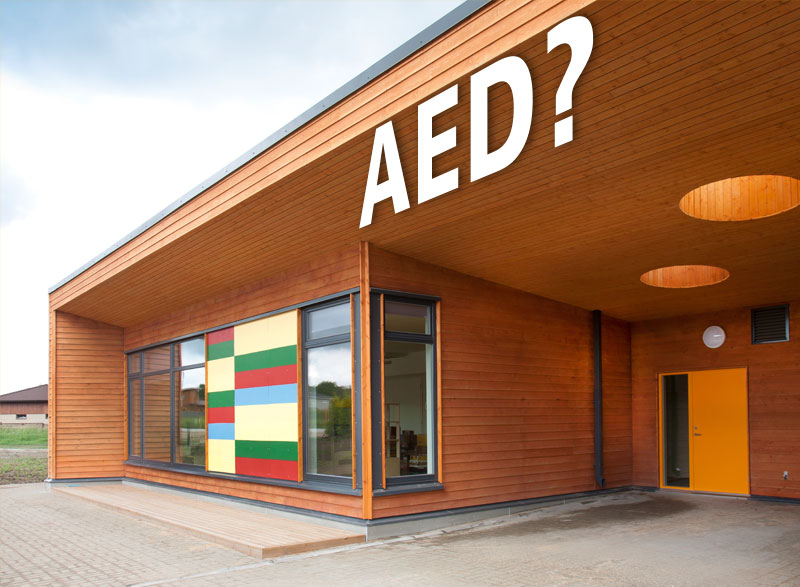Guide to AEDs in Schools: Tips and Procedures
January 18, 2022

According to Parent Heart Watch, 1 in 300 youth has an undetected heart condition and up to 23,000 youth are stricken annually by sudden cardiac arrest.
When sudden cardiac arrest occurs at school, survival rates can be higher if the proper plan is in place. Here is everything needed to ensure your school is prepared for a sudden cardiac arrest.
Automated External Defibrillator (AED) Placement in Schools
All schools should have
multiple AEDS. Just having one AED is not enough. AEDS should be within 3 minutes of every location within the school. Additionally, an athletic trainer or coach should have an AED at all athletic practices and games. AEDS should be easily accessible and not locked in an office.
Where are AEDs typically located in schools?
Each school is different and may have a different policy on where to place their AEDs. Here are some common places you may find them:
• Near the gymnasium
• In the main lobby
• With the nurse
• With the athletic trainer
• In the middle of the hallways
If you work in a school it is crucial to know where the AEDS are located.
AEDs in Schools: Maintenance
A designated staff member should be responsible for maintaining all AEDS within the school. This includes doing a monthly maintenance check ensuring the machine is ready to be used. This check includes making sure battery and pads are plugged in, ensuring the machine is not beeping, and checking the Active Status Indicator Light to ensure it is flashing green. A log of all monthly maintenance checks should be kept to ensure the AED is ready to be used.
New batteries and pads should be ordered prior to them expiring.
DefibtechMD also provides convenient Program Management to ensure all AEDS are ready to help save a life!
Developing a Cardiac Response Team
A Cardiac Response Team consists of a group of school staff members who have up to date CPR/AED certification. This should be a large group to ensure there are always members of the team at school. The members of this team should not only be certified in CPR/AED but also must be familiar with the Cardiac Emergency Response Plan that is established prior to the start of each school year.
Cardiac Emergency Action Plan for Schools
A Cardiac Emergency Action Plan is a written plan that explains the exact actions that will take place in an emergency. These actions should be very clear and very specific. The Cardiac Response Team should evaluate the plan yearly and ensure it is up to date. If a cardiac emergency happens, the Cardiac Response Team should review the event and ensure no updates need to be made to the Cardiac Emergency Action Plan.
This plan should be distributed throughout the school community and also with local Emergency Medical Services.
Importance of Life Saving Drills
All schools have fire drills, so it is important that there are also Cardiac Emergency Life Saving Drills. This will help the Cardiac Response Team practice their Cardiac Emergency Action Plan and ensure they are ready to help save a life in an emergency. These drills should be done once annually.
If you feel your school is not meeting these requirements, we encourage you to take the initiative and speak up. Cardiac arrest can affect anyone at any age and it is crucial these steps are in place to give someone the best possible chance of surviving.
Source:
Cardiac Emergency Response Plan - Parent Heart Watch
